Photos by Anjuli Persaud
A twenty-minute drive across the Demerara Harbour Bridge, heading to the West Bank of Demerara, takes you to a small village called Nismes. The predominantly African-Guyanese village is five square miles in extent, and is bordered by the Demerara River to the east, Vauxhall Canal Number One on the west, Bagotville to the north and Toevlugt to the south.
The small rural community has a population of just over fifteen hundred. It boasts a primary school, one restaurant, two gas stations and a Pentecostal church. In terms of educational opportunities, most of the students attend the Nismes Primary while at the secondary level they go to the West Demerara Secondary School.
There is no active night life in this small village; however, the residents do go over regularly to neighbouring Bagotville, where according to the residents there is always “music playing and beers sipping.” This attracts quite a few of the people living in Nismes, and they hang out there during the ‘Guinness happy hour’ or when they want to crunch on some hot fish fries or sip a cold beverage.
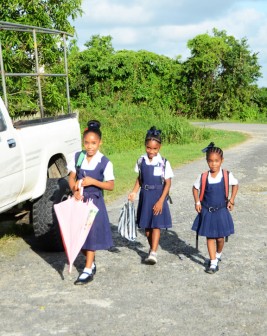 Like most villages along the West Bank of Demerara, the community had its origin in the production of sugar. However most of the villagers have moved away from the sugar plantation and are now self employed. They are involved in rice cultivation, cash-crop farming and the rearing of poultry. Others are engaged in the running of small dry goods shops, while still other seek clerical work outside the village.
Like most villages along the West Bank of Demerara, the community had its origin in the production of sugar. However most of the villagers have moved away from the sugar plantation and are now self employed. They are involved in rice cultivation, cash-crop farming and the rearing of poultry. Others are engaged in the running of small dry goods shops, while still other seek clerical work outside the village.
The community has produced an agronomist, nurses, teachers, men of the cloth and laboratory technicians among others.
During the early years Nismes was one of many small sugar plantations along the West Bank. However, because of its size, it became uneconomical to run and so ceased sugar production.
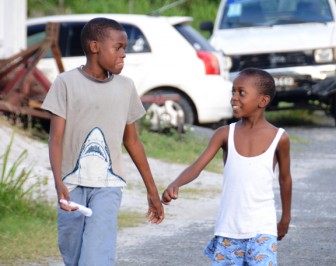
Travelling through the area one encounters a series of canals imposing a grid-like order on the coastal landscape that has its origins in the drainage patterns of the sugar plantation. The village of Nismes has two sections; Electra Housing Scheme and Nismes Old Road.
Electra Housing Scheme
The area was once owned by T T da Silva, and parcels of the land were sold to private individuals for housing, rice cultivation, the rearing of cattle and
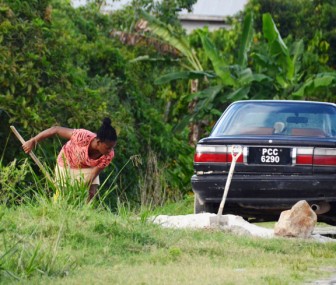
planting of cash crops, among other economic ventures.
By the year 1978, however, large amounts of land which were still unoccupied were put to use by workers of the then Guyana Electricity Corporation (GEC).
The workers who had formed a cooperative society sought and obtained finance from the Guyana Mortgage Finance Bank with which they purchased twenty acres of land. The land was later developed into a housing scheme, which at that time had twenty-seven houses and a community
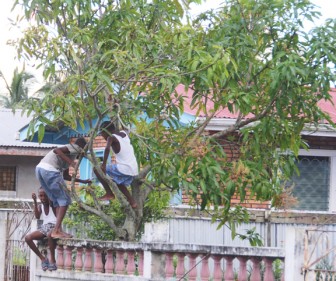
playground. By 1986 that part of Nismes had been renamed ‘Electra Housing Scheme.’
During the midday visit to the community all was silent as the residents were either locked in their homes or at work earning a living.
However Stabroek News did speak to a few of the villagers most of whom were receptive to answering questions.
One of the residents who spoke with SN as we toured the village was Lennox Semple, former chairman of the scheme and one of the first residents to build
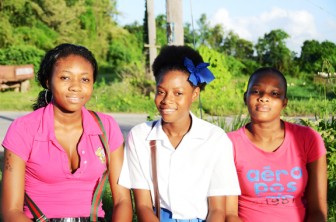
his home in Electra.
Semple said that he had been living in the community for the past twenty-eight years. While tending to his pet dogs he explained, “I am the first person to build my home here… this area was like a jungle at first, it had a lot of bushes.”.
According to him, twenty-eight years ago it was difficult to convince persons to come and build homes there because there was no potable water, light or even roads. “Before people never wanted to come and life here, because they said that it was too bushy, some of them said that it deh behind God Back, but a lot of people are left astonished to see the same place that they never wanted to live at as beautiful as it is today.”

Semple said that back in the day he engaged in many agricultural activities: “I used to buy eddoes to be sold at the Wales and Vreed-en-Hoop market. I had an interest for agriculture since from high school days; I was a member of the Guyana Rice Board also.” The longstanding resident praised the quietness of the village, saying that it was also a “crime free area.”
Semple said his day commenced before “bird wife wake,” and that he assisted his wife Marie Semple who is known to many in the village as ‘Sister Marie’ with her hydroponic gardening. Marie she is involved in large-scale commercial farming of cash crops which are sold at Vreed-en-Hoop and Wales markets.
She told this newspaper that she sells a portion of her produce to residents who she said always left her gate with a smile of satisfaction on their faces, an indication that they were pleased with the quantity and quality of produce sold.
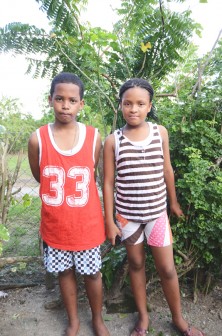
Marie is also known to many in the community not so much for her vending but for being a Sunday school teacher. Villagers down to the youngest child are acquainted with Marie and said they were pleased with her teaching of the Bible whether at church or at home. One young lady who had passed through her hands said, “I enjoyed the days at Sunday school because sister Marie gave us sweets and plenty things to eat sometimes… Even though I get big now I would forever cherish the exciting and thrilling memories of Nismes.”
When Stabroek News visited Marie, her hands were in gloves tending to her plants in the hot midday sun.
SN was given a tour of the garden, and she pointed out the variety of produce from lettuce at one end of the plot to an assortment of vegetables at the other, that she said would be reaped soon.
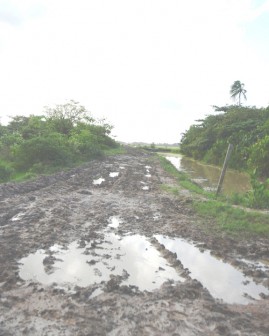
The advantage of living in the Nismes, she explained, is that it is one of the quietest and most peaceful west side villages: “You can’t even know if people are at home or not, because people are always in their homes attending to chores or doing something; we don’t get problems here with our neighbours.” .
Leaving the Semples SN stopped at the residence of Issmay Giddins who is fondly known by the villagers and many along the West Bank as ‘Seamstress Issmay‘ or ‘Sister Issmay.‘
“Well girl this place so quiet and relaxing people don’t have any sort of problems here at all,” Sister Issmay said. She is not only a seamstress by profession but also a caterer, and she caters for many weddings, parties and other celebrations. On the subject of Giddins cooking, other residents relayed, “You want to bite off your finger if you taste she food.”

The villagers are not only engaged in horticulture, but they also cultivate colourful flower gardens. One villager said the flowers not only beautified the community, but added life to it.
While most residents agreed that while crime existed, it was not a serious problem. One cattle owner, however, did say that she had suffered some loss of cattle at the hands of thieves. “I rear plenty sheep and cows and so and one time some people come at my place and thief up me animals them. At one time I had to have plenty dogs in me yard to keep off the thieves, but I glad that times change… it used to be people from other area coming here to thief up de animals.”

One resident said “The minute you come to live here and you attitude ain‘t nice you gotta leave. One time it had a lady who use to cuss up people who even look at she too hard, and a day like today she living somewhere else… this place is a very peaceful village.”
Paulette Clarke, who has been living in Nismes for the past fifteen years, said she was “happy to be a resident there.” Clarke who is involved in rearing sheep and goats is the sole breadwinner for her family.
The single mother said her day started in the wee hours of the morning, with her first task being tending to her animals after saying her prayers. She described the animals as being “like my own children.”
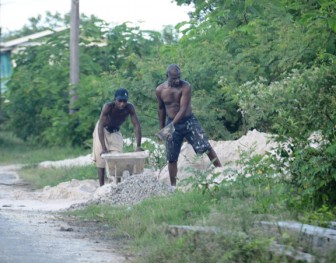
Clarke is not only involved in livestock rearing, but also operates a grocery stall in Stabroek Market where she spends most of her days.
Weekends, she said, were the happiest time for her; Sundays were for family when she usually cooked up a storm of mouthwatering dishes for her two children and her grand-daughter. She added, “I like inviting my family over whenever so that we can spend quality time together… whenever they come, the first place they go to is the kitchen because they know I always like to put my fingers at work.”
According to Clarke living in Nismes had helped her achieve her life’s goal. “Since living here I have accomplished my own home… I even started rearing my animals here… I am living a very simple but yet comfortable life… I have accomplished most of my goals on my time living here.”
However, the residents do have some major concerns, among them the lack of street lights along the main road. The roads also need to be constructed properly, the Nismes back road being a case in point. Residents also said that the young people were in need of activities to keep them occupied.




